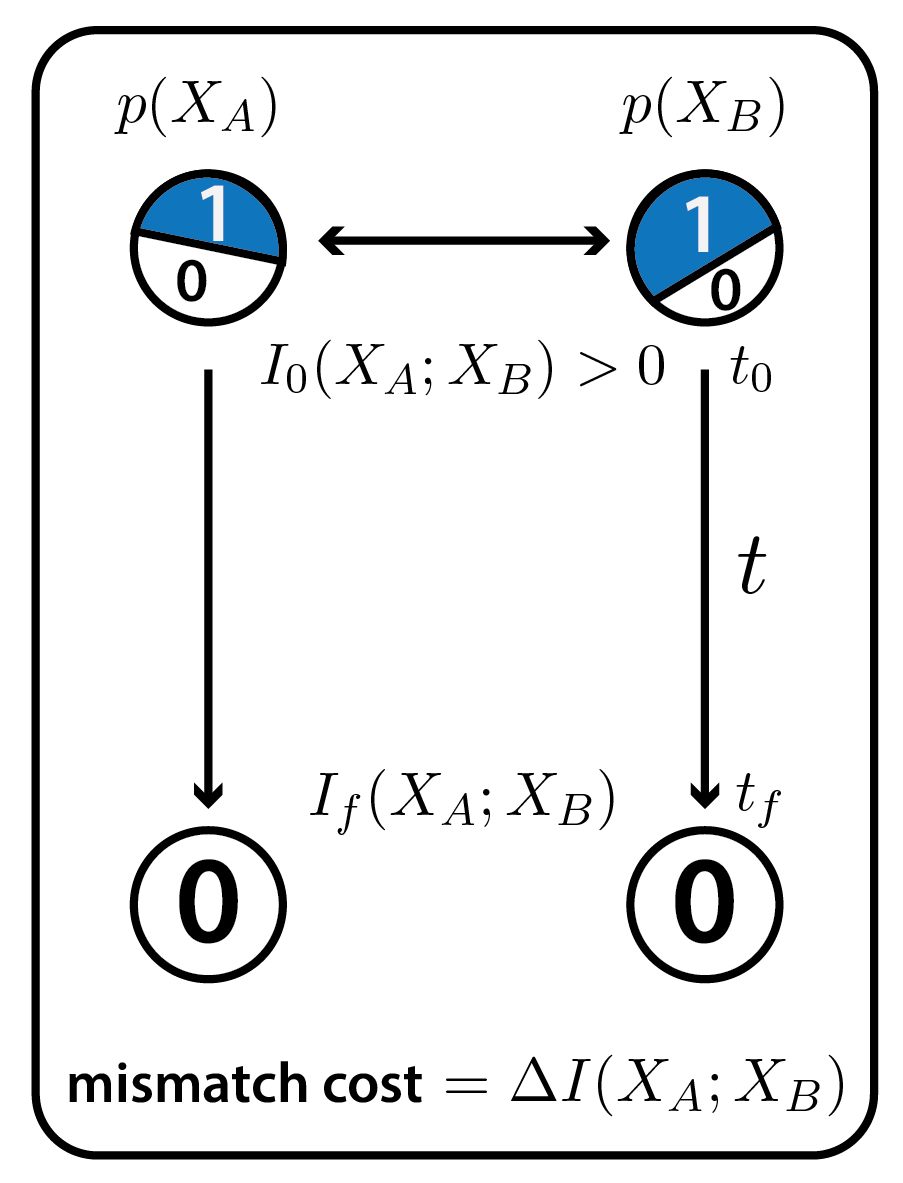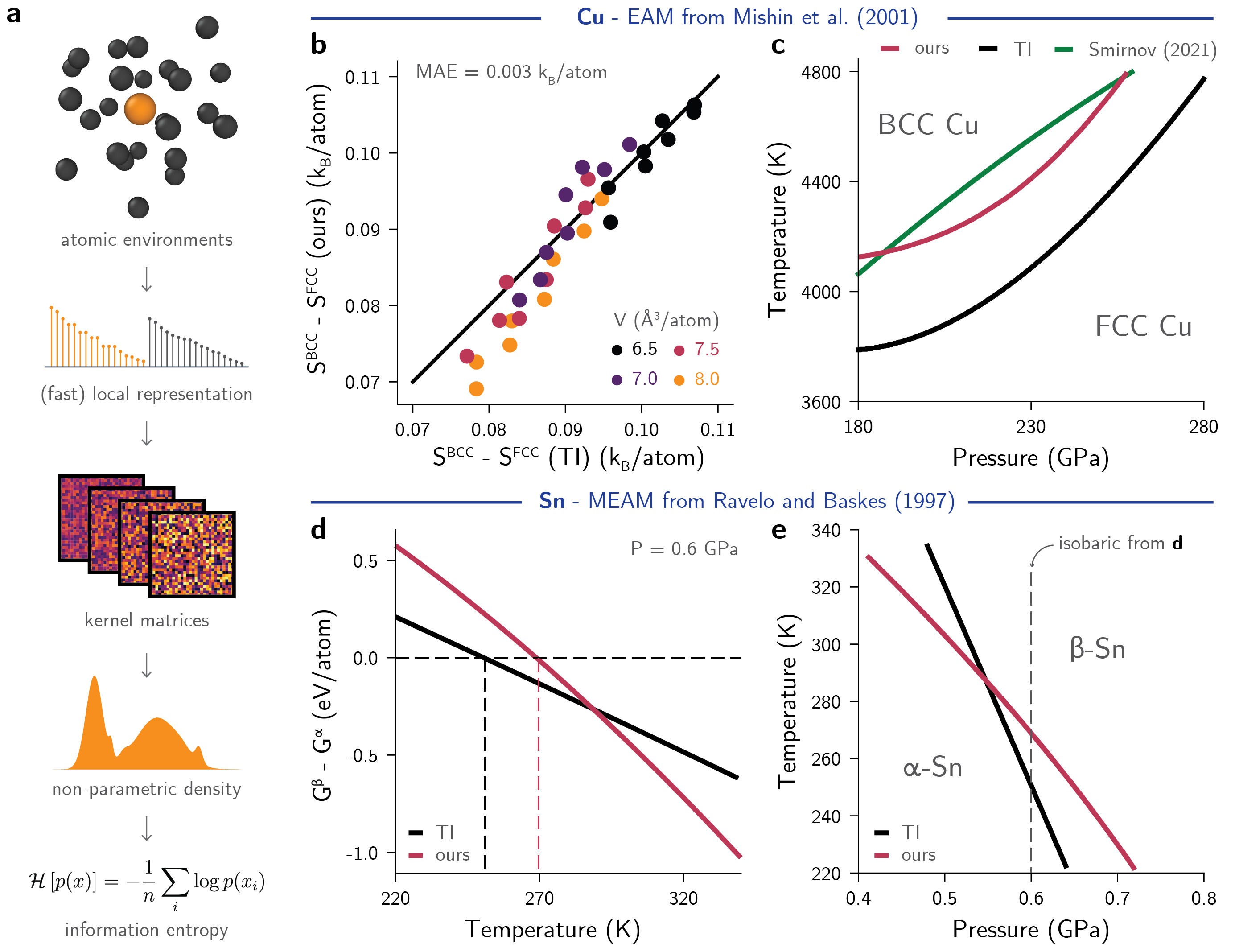Order-theoretic models for decision-making: Learning, optimization, complexity and computation

0

Sign in to get full access
Overview
- This paper introduces a new paradigm for atomistic machine learning that unifies information theory, statistical mechanics, and thermodynamics.
- The authors propose a systems theoretic approach to online machine learning that leverages graph neural networks informed by local thermodynamic principles.
- The research aims to establish a theoretical foundation for information theory-based discovery of equivariances in complex systems.
Plain English Explanation
The paper presents a novel framework that brings together key concepts from information theory, statistical physics, and machine learning. The central idea is to model complex systems, like materials or biological molecules, using a graph-based approach that is grounded in thermodynamic principles.
By combining these different fields, the researchers hope to develop more powerful and interpretable machine learning models for understanding the behavior of complex atomistic systems. For example, the systems theoretic approach to online machine learning they describe could enable AI systems to continuously adapt and learn as new information becomes available.
The paper also explores how information theory can be used to uncover hidden symmetries or "equivariances" in the structure of complex systems. Identifying these equivariances is important for building more [robust and towards-systems-theory-algorithms efficient machine learning models.
Overall, the work aims to lay the groundwork for a unified theory that can bridge the gap between atomistic simulations, statistical mechanics, and modern machine learning techniques. This could lead to significant advances in our understanding and modeling of complex physical, chemical, and biological systems.
Technical Explanation
The paper proposes a new paradigm for atomistic machine learning that integrates concepts from information theory, statistical mechanics, and thermodynamics. The authors introduce a graph neural network-based approach that models the interactions between atoms and molecules using a systems-theoretic framework.
This framework allows the neural networks to be informed by local thermodynamic principles, such as energy and entropy, which the authors argue are crucial for capturing the underlying physics of complex atomistic systems. The researchers demonstrate how this approach can be used for online machine learning, where the models continuously update their parameters as new data becomes available.
A key focus of the paper is the use of information theory to discover hidden symmetries or equivariances in the structure of complex systems. By identifying these equivariances, the authors show that it is possible to build more robust and efficient machine learning models that can better capture the underlying physics of the system.
The paper presents several case studies, including the application of the proposed framework to materials science and molecular dynamics simulations. The results demonstrate the potential of this approach to outperform traditional machine learning techniques in terms of accuracy, interpretability, and sample efficiency.
Critical Analysis
The paper presents a compelling and ambitious vision for a unified theory of atomistic machine learning, but it is important to consider some of the potential limitations and areas for further research.
One key challenge is the computational complexity of the proposed framework, particularly when dealing with large-scale systems. The authors acknowledge this issue and suggest that further advancements in hardware and algorithmic efficiency will be necessary to make the approach practical for real-world applications.
Additionally, while the information-theoretic approach to discovering equivariances is promising, the paper does not provide a comprehensive evaluation of the generalizability and robustness of this technique. Further research is needed to understand the limitations and potential biases of this approach, especially when applied to diverse types of complex systems.
Another area for further exploration is the integration of the proposed framework with existing domain-specific knowledge and models. The paper emphasizes the importance of grounding the machine learning models in fundamental physical principles, but more work is needed to understand how this can be seamlessly incorporated into existing workflows and tools used by practitioners in fields like materials science and molecular biology.
Overall, the paper presents a compelling vision for a new paradigm in atomistic machine learning, but significant challenges remain in terms of scalability, robustness, and practical implementation. Continued research and collaboration between experts in machine learning, physics, and domain-specific fields will be crucial for realizing the full potential of this approach.
Conclusion
This paper introduces a novel framework that combines concepts from information theory, statistical mechanics, and machine learning to develop a more comprehensive and physically-grounded approach to atomistic modeling and simulation.
The key contributions of this work include the development of a graph neural network-based architecture informed by local thermodynamic principles, the application of information theory to discover hidden equivariances in complex systems, and the systems theoretic approach to online machine learning that enables continuous adaptation and learning.
If successful, this research could lead to significant advancements in our understanding and modeling of complex physical, chemical, and biological systems, with potential applications in materials science, drug discovery, and beyond. However, the authors acknowledge several challenges, including scalability and the need for further integration with existing domain-specific knowledge and tools.
Continued interdisciplinary collaboration and research will be crucial for realizing the full potential of this unified approach to atomistic machine learning and its implications for towards-information-theory-based-discovery-equivariances.
This summary was produced with help from an AI and may contain inaccuracies - check out the links to read the original source documents!
Related Papers


0
Order-theoretic models for decision-making: Learning, optimization, complexity and computation
Pedro Hack
The study of intelligent systems explains behaviour in terms of economic rationality. This results in an optimization principle involving a function or utility, which states that the system will evolve until the configuration of maximum utility is achieved. Recently, this theory has incorporated constraints, i.e., the optimum is achieved when the utility is maximized while respecting some information-processing constraints. This is reminiscent of thermodynamic systems. As such, the study of intelligent systems has benefited from the tools of thermodynamics. The first aim of this thesis is to clarify the applicability of these results in the study of intelligent systems. We can think of the local transition steps in thermodynamic or intelligent systems as being driven by uncertainty. In fact, the transitions in both systems can be described in terms of majorization. Hence, real-valued uncertainty measures like Shannon entropy are simply a proxy for their more involved behaviour. More in general, real-valued functions are fundamental to study optimization and complexity in the order-theoretic approach to several topics, including economics, thermodynamics, and quantum mechanics. The second aim of this thesis is to improve on this classification. The basic similarity between thermodynamic and intelligent systems is based on an uncertainty notion expressed by a preorder. We can also think of the transitions in the steps of a computational process as a decision-making procedure. In fact, by adding some requirements on the considered order structures, we can build an abstract model of uncertainty reduction that allows to incorporate computability, that is, to distinguish the objects that can be constructed by following a finite set of instructions from those that cannot. The third aim of this thesis is to clarify the requirements on the order structure that allow such a framework.
Read more6/18/2024


0
Is stochastic thermodynamics the key to understanding the energy costs of computation?
David Wolpert, Jan Korbel, Christopher Lynn, Farita Tasnim, Joshua Grochow, Gulce Kardec{s}, James Aimone, Vijay Balasubramanian, Eric de Giuli, David Doty, Nahuel Freitas, Matteo Marsili, Thomas E. Ouldridge, Andrea Richa, Paul Riechers, 'Edgar Rold'an, Brenda Rubenstein, Zoltan Toroczkai, Joseph Paradiso
The relationship between the thermodynamic and computational characteristics of dynamical physical systems has been a major theoretical interest since at least the 19th century, and has been of increasing practical importance as the energetic cost of digital devices has exploded over the last half century. One of the most important thermodynamic features of real-world computers is that they operate very far from thermal equilibrium, in finite time, with many quickly (co-)evolving degrees of freedom. Such computers also must almost always obey multiple physical constraints on how they work. For example, all modern digital computers are periodic processes, governed by a global clock. Another example is that many computers are modular, hierarchical systems, with strong restrictions on the connectivity of their subsystems. This properties hold both for naturally occurring computers, like brains or Eukaryotic cells, as well as digital systems. These features of real-world computers are absent in 20th century analyses of the thermodynamics of computational processes, which focused on quasi-statically slow processes. However, the field of stochastic thermodynamics has been developed in the last few decades - and it provides the formal tools for analyzing systems that have exactly these features of real-world computers. We argue here that these tools, together with other tools currently being developed in stochastic thermodynamics, may help us understand at a far deeper level just how the fundamental physical properties of dynamic systems are related to the computation that they perform.
Read more8/30/2024


0
Information theory unifies atomistic machine learning, uncertainty quantification, and materials thermodynamics
Daniel Schwalbe-Koda, Sebastien Hamel, Babak Sadigh, Fei Zhou, Vincenzo Lordi
An accurate description of information is relevant for a range of problems in atomistic modeling, such as sampling methods, detecting rare events, analyzing datasets, or performing uncertainty quantification (UQ) in machine learning (ML)-driven simulations. Although individual methods have been proposed for each of these tasks, they lack a common theoretical background integrating their solutions. Here, we introduce an information theoretical framework that unifies predictions of phase transformations, kinetic events, dataset optimality, and model-free UQ from atomistic simulations, thus bridging materials modeling, ML, and statistical mechanics. We first demonstrate that, for a proposed representation, the information entropy of a distribution of atom-centered environments is a surrogate value for thermodynamic entropy. Using molecular dynamics (MD) simulations, we show that information entropy differences from trajectories can be used to build phase diagrams, identify rare events, and recover classical theories of nucleation. Building on these results, we use this general concept of entropy to quantify information in datasets for ML interatomic potentials (IPs), informing compression, explaining trends in testing errors, and evaluating the efficiency of active learning strategies. Finally, we propose a model-free UQ method for MLIPs using information entropy, showing it reliably detects extrapolation regimes, scales to millions of atoms, and goes beyond model errors. This method is made available as the package QUESTS: Quick Uncertainty and Entropy via STructural Similarity, providing a new unifying theory for data-driven atomistic modeling and combining efforts in ML, first-principles thermodynamics, and simulations.
Read more4/19/2024
🐍

0
Towards a Systems Theory of Algorithms
Florian Dorfler, Zhiyu He, Giuseppe Belgioioso, Saverio Bolognani, John Lygeros, Michael Muehlebach
Traditionally, numerical algorithms are seen as isolated pieces of code confined to an {em in silico} existence. However, this perspective is not appropriate for many modern computational approaches in control, learning, or optimization, wherein {em in vivo} algorithms interact with their environment. Examples of such {em open algorithms} include various real-time optimization-based control strategies, reinforcement learning, decision-making architectures, online optimization, and many more. Further, even {em closed} algorithms in learning or optimization are increasingly abstracted in block diagrams with interacting dynamic modules and pipelines. In this opinion paper, we state our vision on a to-be-cultivated {em systems theory of algorithms} and argue in favor of viewing algorithms as open dynamical systems interacting with other algorithms, physical systems, humans, or databases. Remarkably, the manifold tools developed under the umbrella of systems theory are well suited for addressing a range of challenges in the algorithmic domain. We survey various instances where the principles of algorithmic systems theory are being developed and outline pertinent modeling, analysis, and design challenges.
Read more5/1/2024